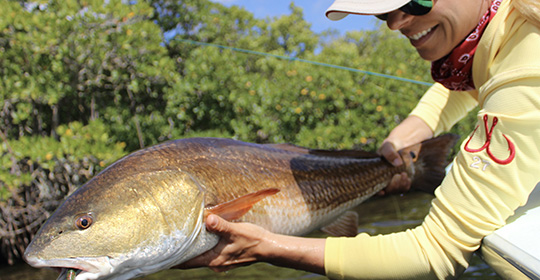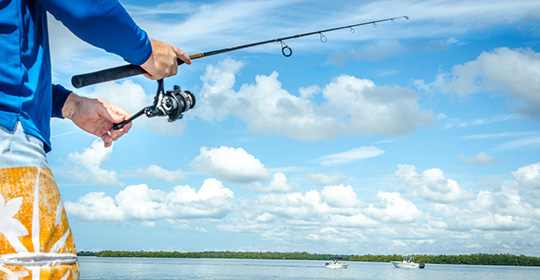5 Best Saltwater Fishing Knots for Florida Inshore Trips
By Debbie Hanson
Jan 09, 2024
Summary of the best saltwater fishing knots for Florida inshore fish species, why these knots are used most often, which fishing knots to use for redfish
If you are planning a trip to the Sunshine State this winter, now is the perfect time to learn about five of the best saltwater fishing knots for Florida inshore or backcountry species and why these knots are used most often.

1. Non-Slip Loop Knot
One of the most important terminal saltwater fishing knots for Florida inshore fishing is the non-slip loop knot. When fly fishing or fishing with lures that don’t have a split ring attached, the non-slip loop knot allows the fly or lure to come alive with additional movement. When the non-slip loop knot is tied correctly, the tag end points toward the hook so that it is less likely to collect debris or seagrass. The size of the gap between the overhand knot and hook eye will determine the size of the finished loop in the knot. You can find a video tutorial on saltwater fishing knots for Florida that includes the non-slip loop knot.
2. Improved Clinch Knot
Due to the fact that the improved clinch knot can be tied quickly and more consistently than other knots, it is likely to remain the list of best saltwater fishing knots for Florida (or anywhere, for that matter). The original clinch knot only requires that the tag end of the line be passed through the loop closest to the eye of the hook, lure, or fly. The improved version requires that the tag end be passed through the loop closest to the eye of the hook, lure, or fly and then through the second larger loop that runs parallel to the four to six turns around the standing end. This knot snugs down up against the eye of the hook, lure, or fly. Since the improved clinch is one of the most popular terminal knots, you can find it in most any step-by-step guide to saltwater fishing knots for Florida.
3. Double Uni Knot
The double uni knot is one of the most popular leader-to-line saltwater fishing knots for Florida redfish, snook, and spotted seatrout. In other words, the double uni is a knot you would use to connect a leader to your main fishing line (for example, braided fishing line to fluorocarbon leader material) or a knot you could use to make your own tapered fly fishing leaders. The two lines don’t need to be of equal diameter, but this knot is best used when the two lines are not of dramatically different diameter. You can find other fishing knots and rigs that are better when connecting lines of dramatically different diameter, such as the Albright knot or surgeon’s knot.

4. Uni Knot
The uni knot is a great multi-purpose inshore fishing knot that can be used to attach fishing line to the spool of a reel or for attaching terminal tackle (for example, a hook or swivel) to your line. One of the reasons saltwater inshore anglers use it frequently is because it works well with both braided and monofilament fishing lines, plus it is a strong knot that tests at 90% - 100% of the line's strength.
5. FG Knot
While the FG knot is a relatively new knot, it has proven to be one of the strongest and thinnest knots you can use for a leader to line connection (specifically when attaching braid to monofilament or fluorocarbon leader). Knot strength will always be to your advantage since you may have to muscle a large redfish out of the mangroves or put added pressure on a snook to get it away from bridge or dock pilings. The slim profile of the FG knot means that when you are fishing with a longer leader, it passes through the guides on a fishing rod easily. This is a knot you’ll need to practice though -- it does take time to learn how to tie the FG Knot properly.









